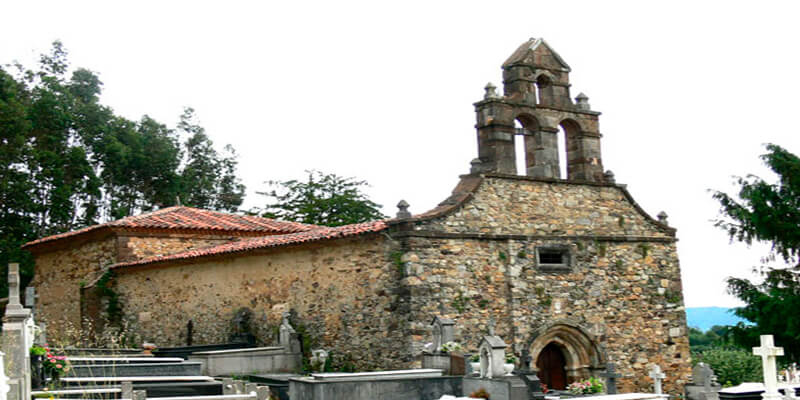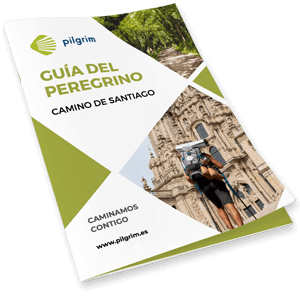Salas
‹ Back to the stage
Salas
- Residents: 5.549 aprox.
- Province: Asturias
Information
Get to know Salas
The municipality of Salas is located near Oviedo and Avilés. It is in this town where the Narcea and Nalon rivers converge, as well as its tributary Nonaya. This watercourse is famous for providing excellent salmon.
From this town it is worth mentioning the spectacular palace that we find in its historic center, the Palacio de Valdés
.
Location
How to get there
To reach the municipality of Salas there are several options, if you want to arrive by car it is possible by the national road N-634, in addition also transiting the regional roads AS-226 and AS-225.
To get there by bus is possible thanks to some daily lines offered by the company ALSA, which communicate Oviedo with Salas and other lines with surrounding villages.
History / Culture
What to see
Casa María Veiga
It is a large house built in the seventeenth century that today is used as a rural house, distinguished from the other houses by the imposing coat of arms that reigns on its facade and its carved parapets. It also highlights the corridor located in its central part, nowadays converted into a gallery.

Colegiata de Santa María la Mayor
It is an incredible Christian temple founded by the Valdés-Salas family in the 16th century. It consists of a single nave to which chapels were attached over time. Inside the apse stands out with a magnificent decorated vault and two majestic altarpieces dating from the seventeenth century. On one side the main altarpiece contains a biblical representation of the Magi, the baptism and St. Martin donating his cloak; the other altarpiece is located in the chapel of the Malleza family.

Iglesia de San Martín
This magnificent church was built between the eighth and ninth centuries and rebuilt in the tenth century. It was rebuilt in its entirety in the 15th century and in the following centuries it was gradually renovated. It has only one nave, which is accessed through a Gothic pointed door with three molded archivolts. The presbytery has a square floor plan and a ribbed vault with a rococo altarpiece dedicated to San Martín. Around the church is the cemetery of the village.

Iglesia de Santa Eulalia de Doriga
The church of Santa Eulalia de Doriga has a pre-Romanesque style typical of the twelfth century. We can find, in its interior, a tombstone of the year 1121 with the following inscription: It was consecrated by Bishop Pelayo in the XIII kalendas of the era milésima CLVIII.
.Currently, the temple presents a clear neoclassical style although in the past it was Romanesque. It has a Latin cross plan and a large tower that tops the building. It should be noted that a side facade of the original building is preserved.

La Torre y el Palacio de Valdés
This beautiful palace dates from the sixteenth century while its tower is a few years earlier. The building is joined by a semicircular arch where we can see the coats of arms of the Valdés-Salas family. It is made of masonry and stonework and was the home of the Valdés Salas family, politician and founder of the University of Oviedo, who was later buried in the Collegiate Church of Santa María la Mayor.

Monasterio de San Salvador de Cornellana
This monastery is located between the Narcea river, known for its richness in salmon, and the Nonaya river. In its surroundings there was a Paleolithic and Neolithic settlement. Near this area also passes the Camino de la Mesa, used in ancient times by the Romans to link Asturias with León.

Museo Aula Didáctica del Prerrománico
The Pre-Romanesque Museum of Salas is located in the Medieval Tower of Salas, declared of Cultural Interest and National Monument. It was founded in 1998 so that visitors can discover and learn about the large collection of pieces and tombstones with epigraphs of the original church of San Martin, dating from the tenth century.

Palacio de Doriga
It is a large tower-palace of stately and defensive style that was built between the fourteenth and sixteenth centuries. The first body to form this complex was the square medieval tower to which was later attached the rectangular manor house.
The tower was built in the 14th and 16th centuries.

Information of interest
Local police
985 830 004 / 689 572 127
Civil guard
985 830 912
Fire department
112
Civil protection
112
Town hall
985 830 004
Health center
985 830 849
Tourism office
947 397 001
Paseo Jesús Aparicio, 6

We send you your itinerary
Enter your details and receive your travel itinerary by email
Recommended
Gastronomy
Recommended
Festivals and Pilgrimages
Local festivity
Último martes del mes de abril: Martes de feria
Primitive Way
On foot
14 stages
















